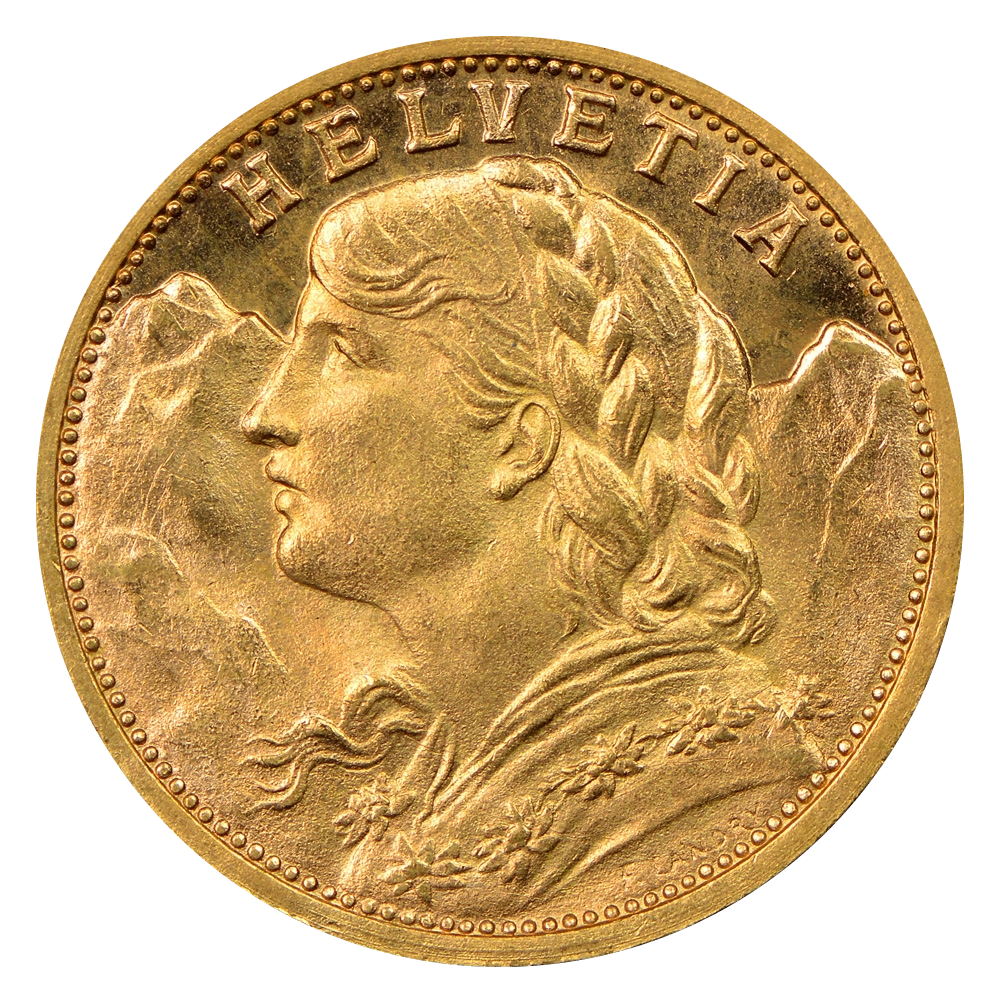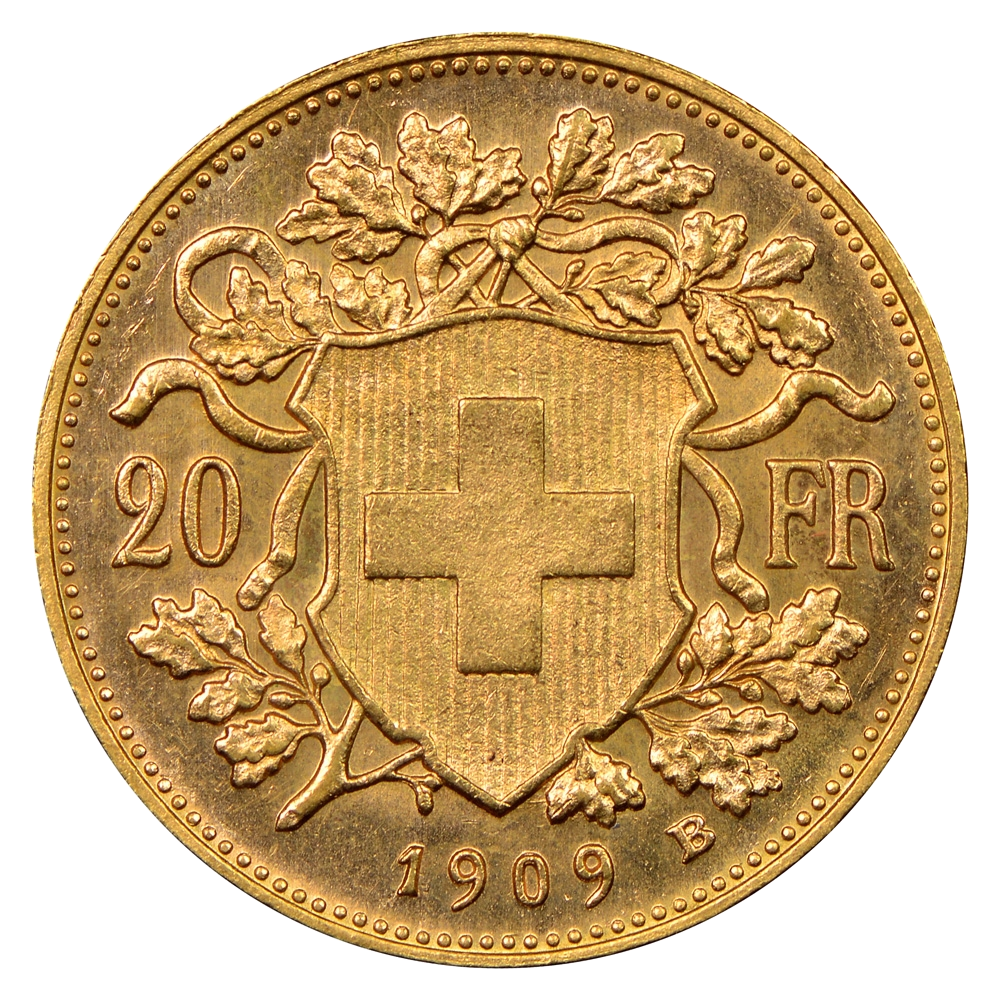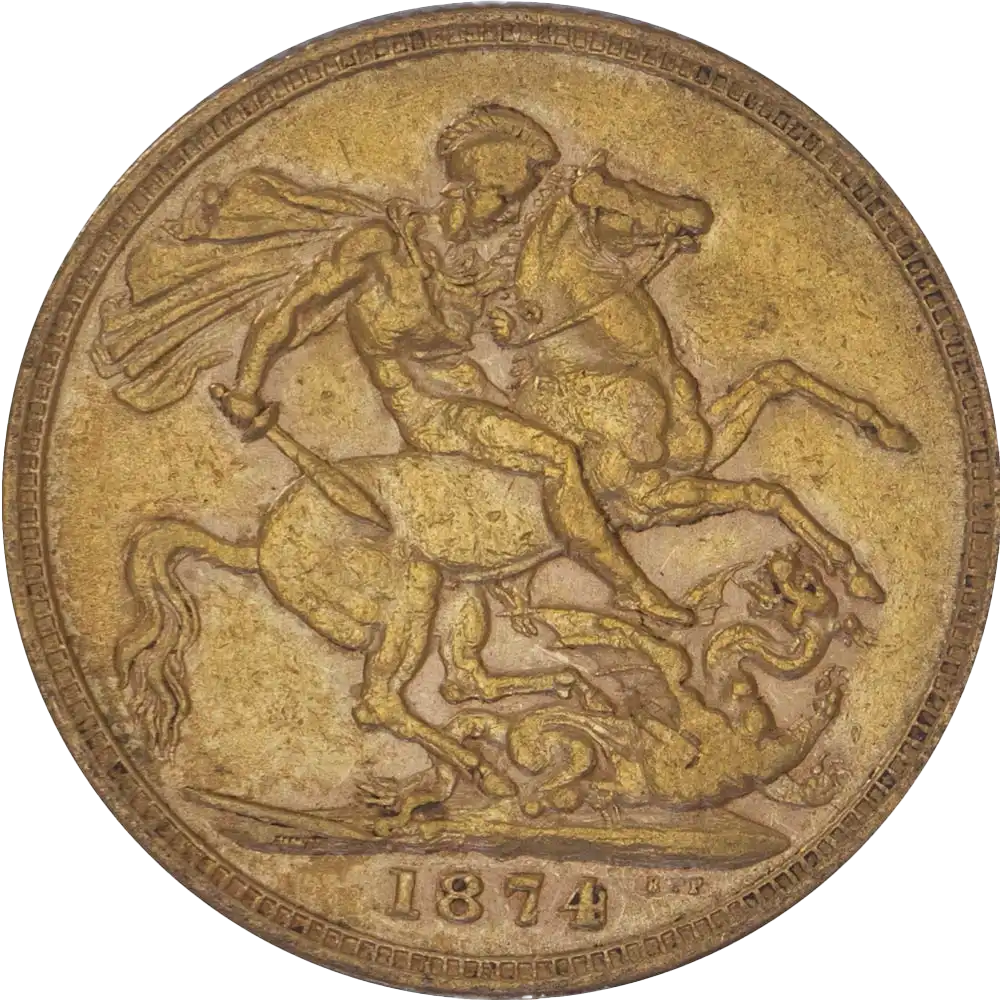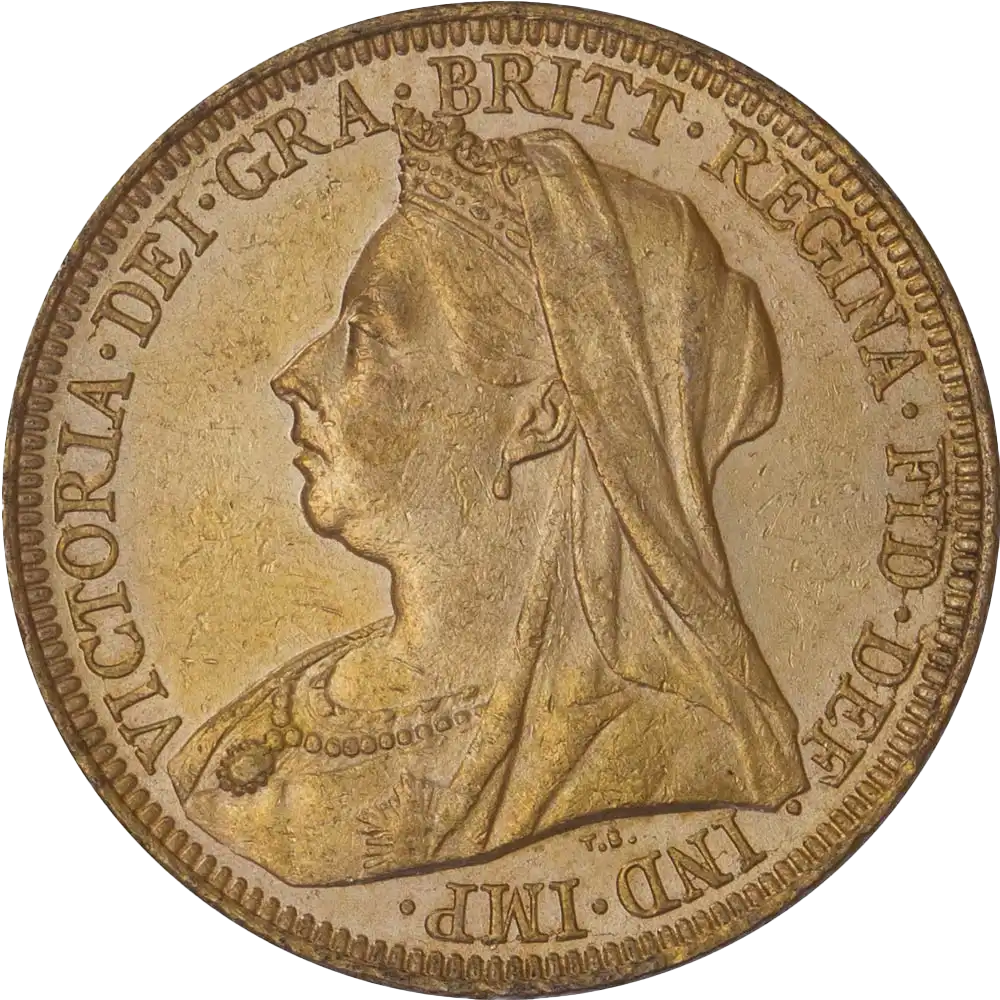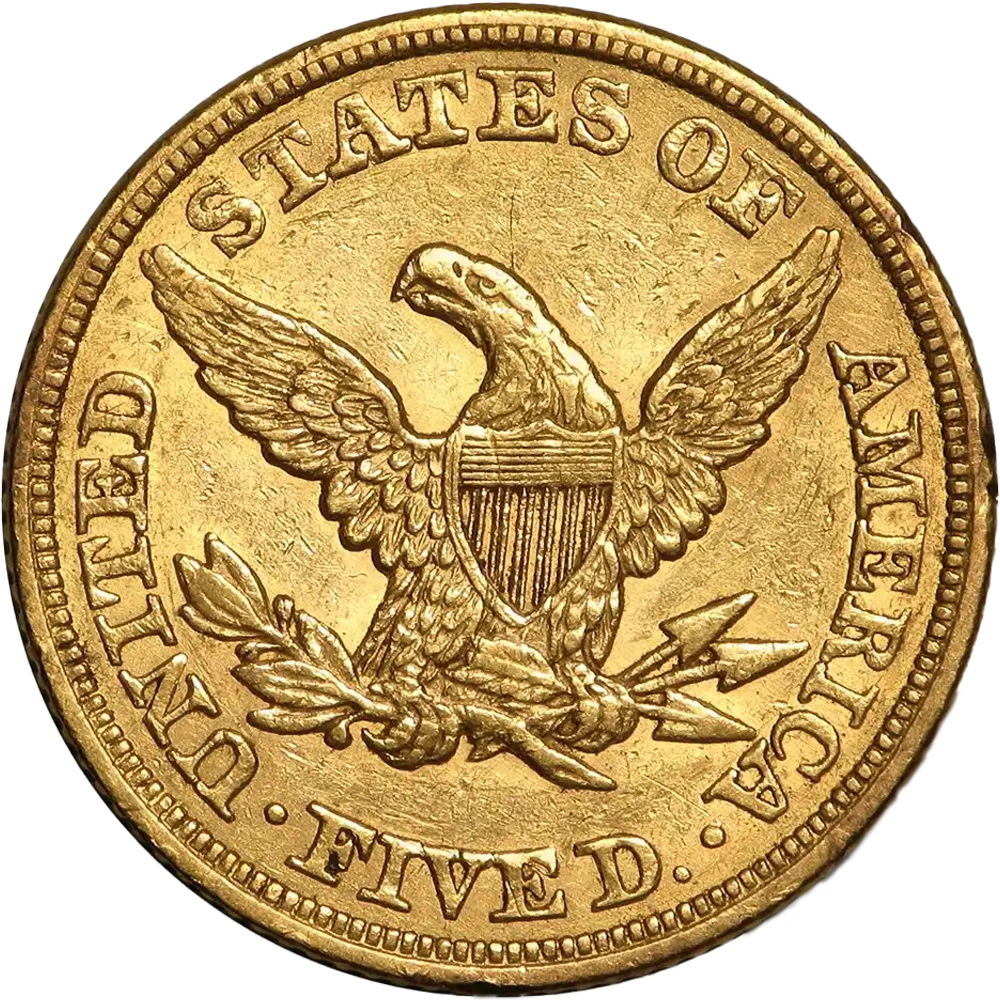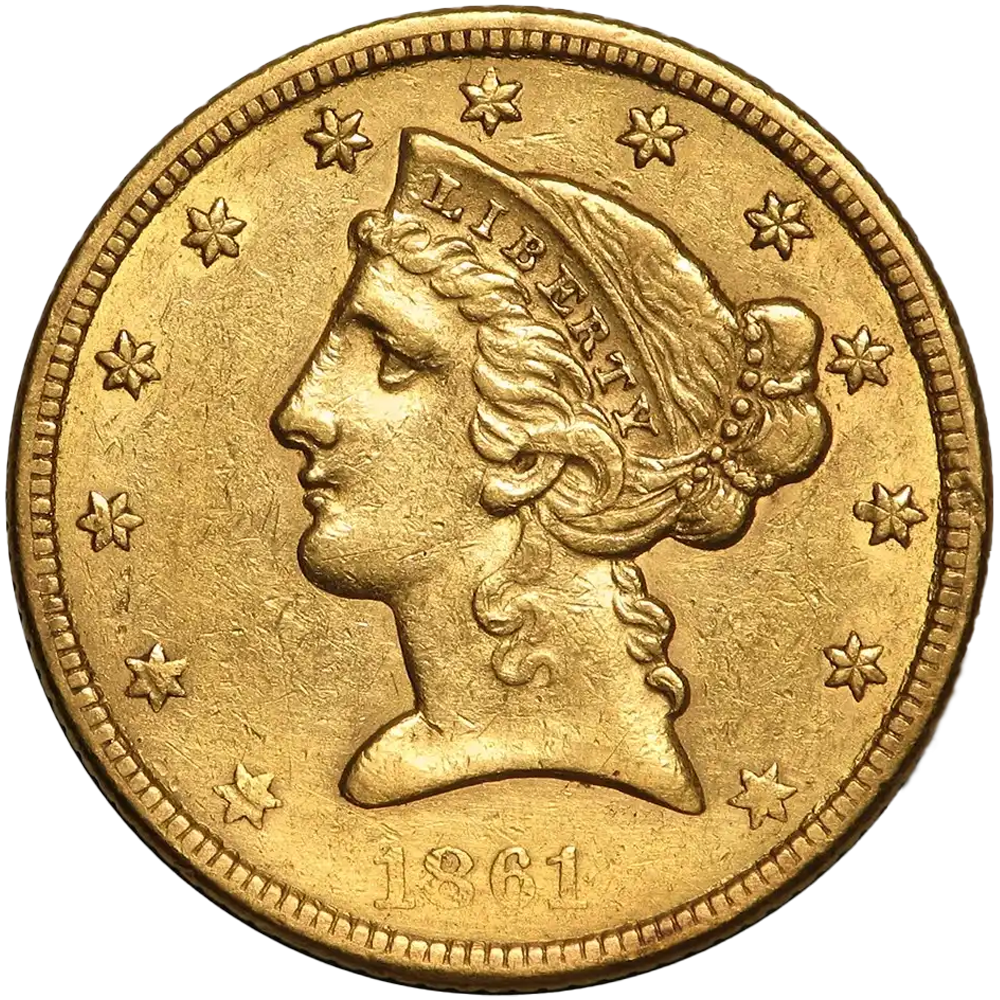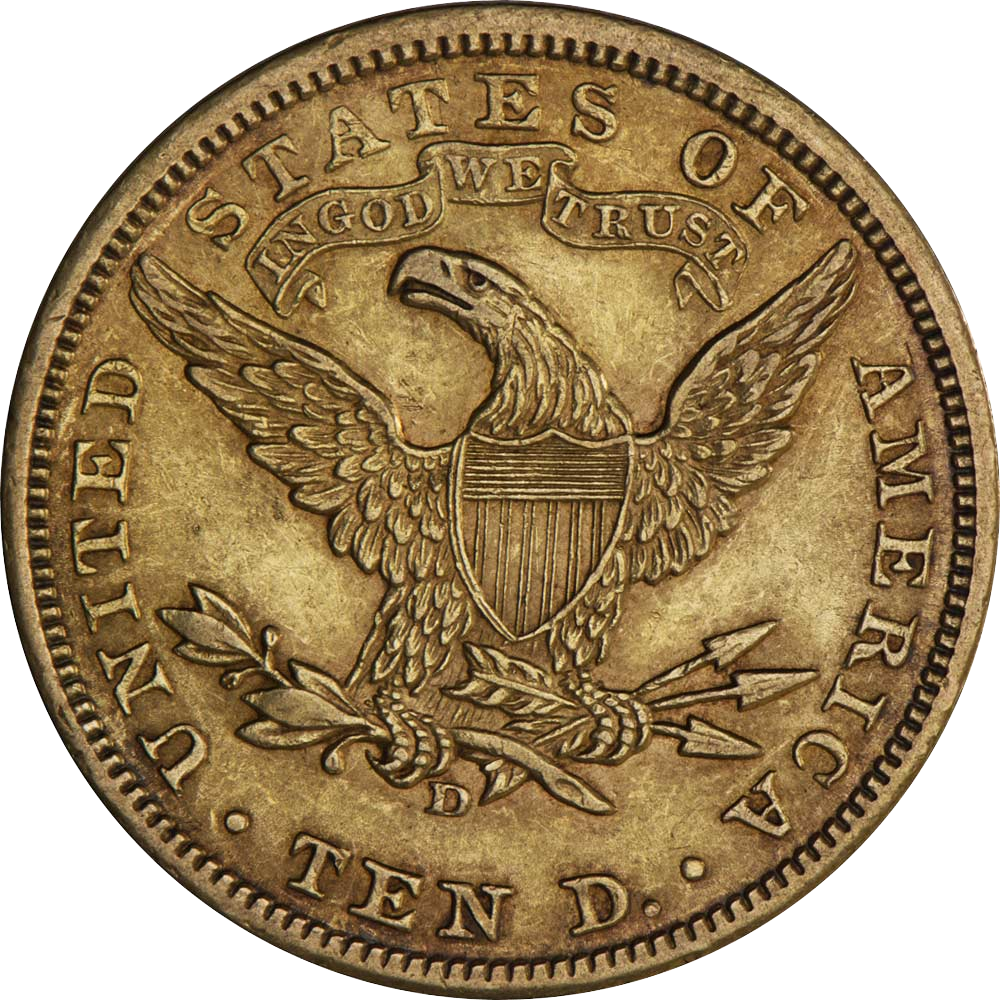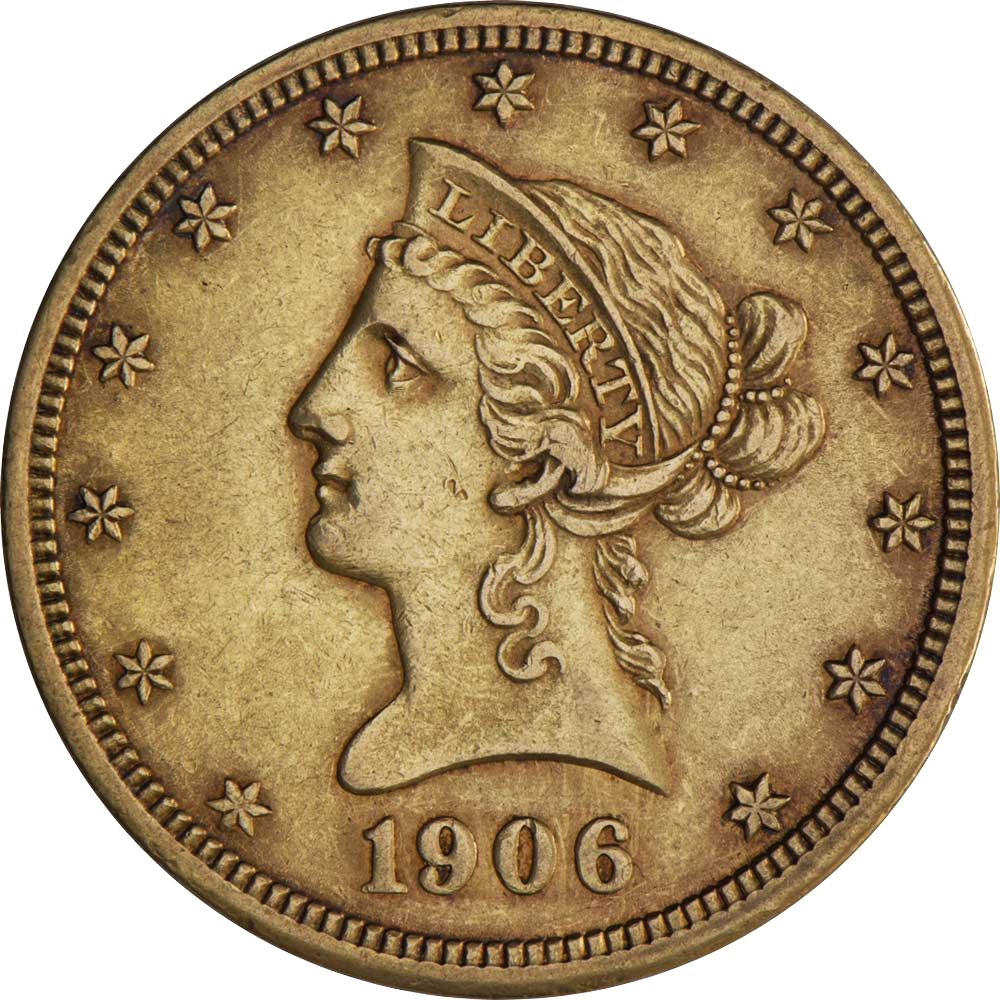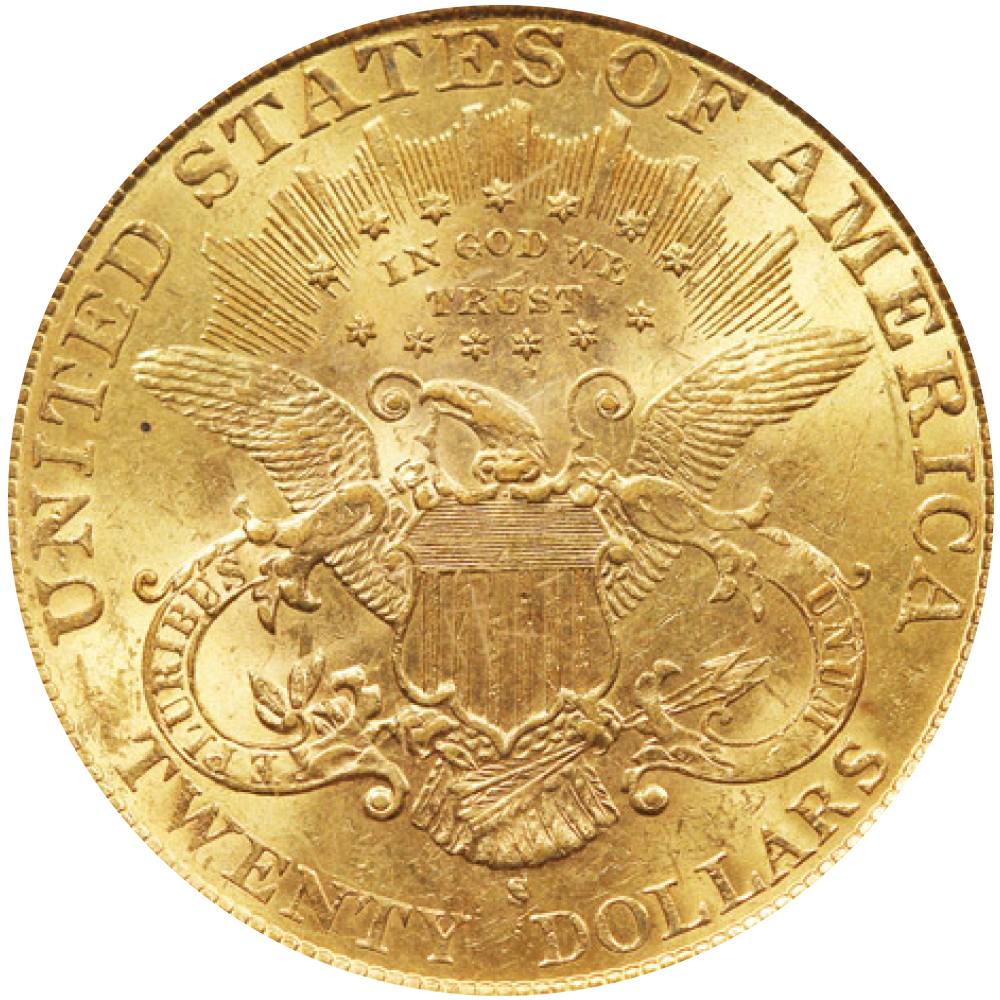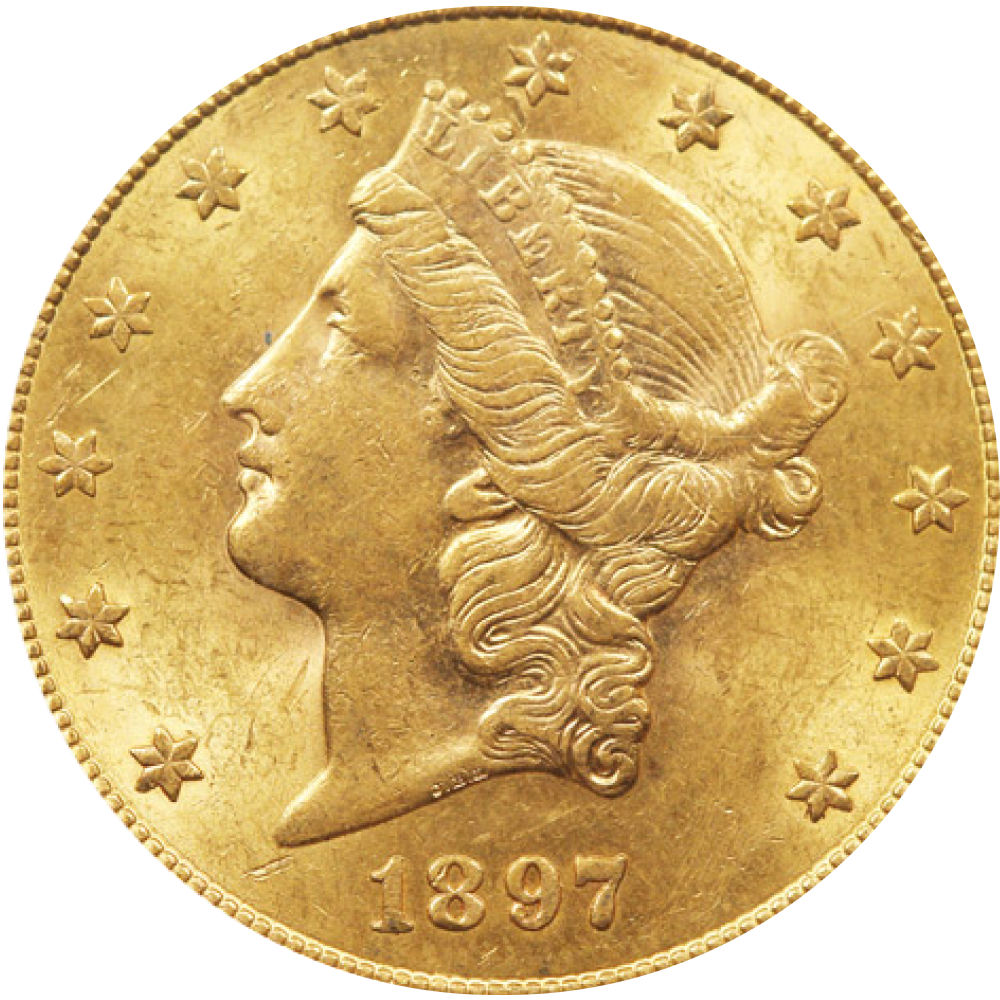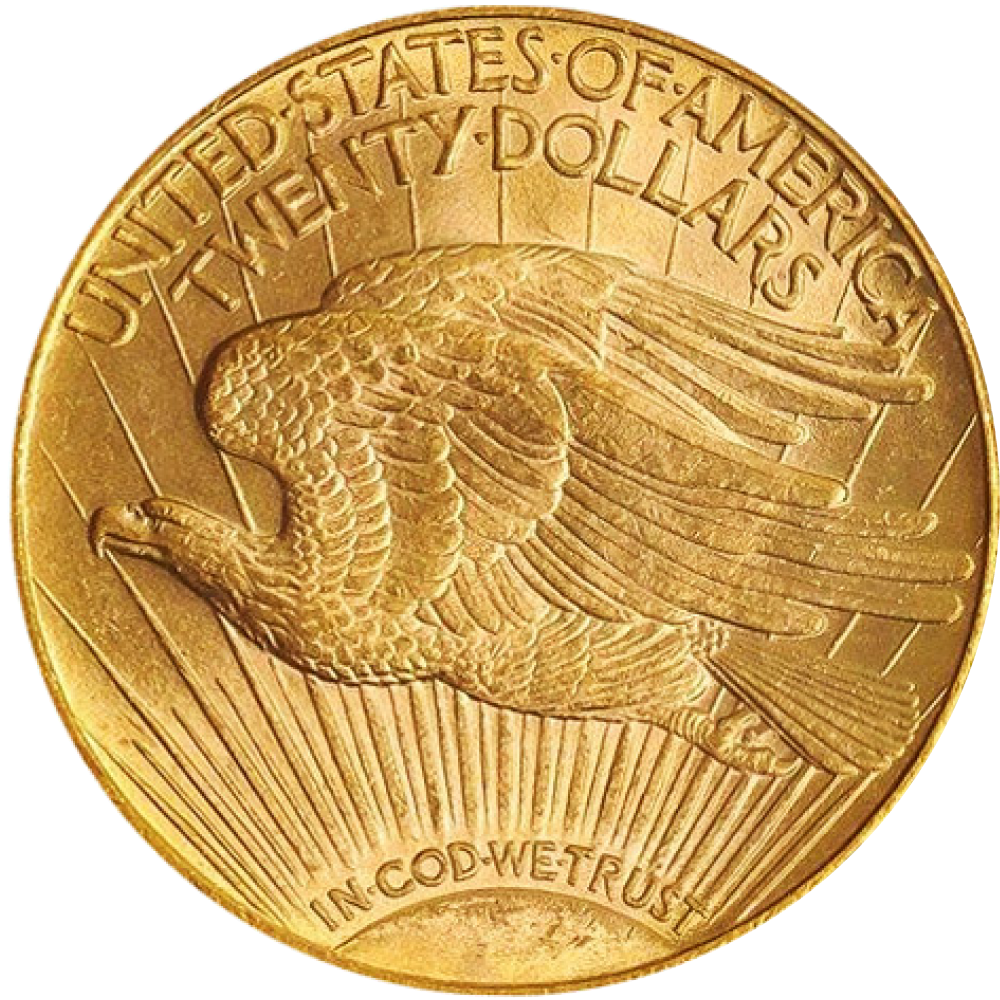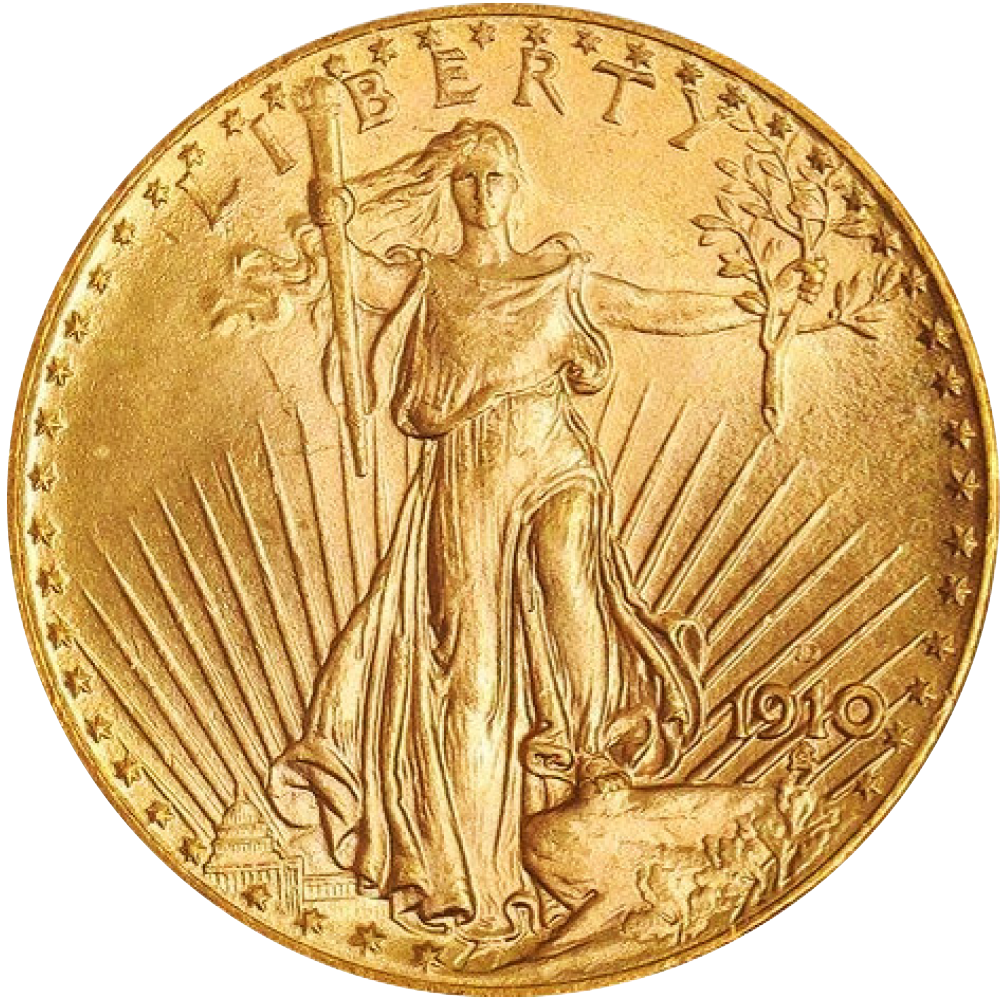About Pre 1933 Coins
Pre-33 coins have been an attractive option for hobbyists who want to upgrade the coins in their type sets or trade up generic common-dated coins to ones with scarcer semi-key or key dates. They are also popular for building an entire series based around a favorite type (or types). For example, some numismatists will not collect anything less than MS63-graded Saint-Gaudens coins. The grading scale ranges from MS61 to MS70 (proof). MS63-graded coins are common and have a slightly-impaired mint luster; their surface reveals numerous small contact marks, a few scattered heavy marks, and small hairlines visible without the aid of magnification. Though MS63 coins are generally considered of average quality, they are aesthetically attractive and very popular with collectors.
Gold Coins Pre-1933
The U.S. Mint had been producing coins well over a hundred years– since March of 1793–when President Franklin D. Roosevelt issued Executive Order 6102 on April 5, 1933, forbidding the hoarding of gold coin, gold bullion, and gold certificates within the continental United States. Americans were required to relinquish their gold with compensation of $20.67 per ounce. The law remained in effect until December 31, 1974. Meanwhile, the US Treasury melted the millions of returned American gold coins and cast them into gold bars. Surviving vintage pre-1933 U.S. gold coins are rare and, therefore, popular with collectors and investors.
Saint-Gaudens Gold Double Eagle
In 1904 President Theodore Roosevelt (1901 to 1909) decided the nation’s coins were unattractive, uninspired, and should be redesigned. He commissioned Augustus Saint-Gaudens, foremost American sculptor of the late 19th century, to design the new one-cent piece, the ten-dollar gold piece, and the twenty-dollar gold piece, replacing the Liberty Gold Double Eagle. The Saint-Gaudens Double Eagle is often considered to be the most beautiful of U.S. gold coins; it features Miss Liberty, walking while bearing an olive branch in one hand and a torch in the other, lighting the way to freedom, as the sun rises over the Capitol. The reverse depicts a flying, majestic bald eagle and the twenty-dollar denomination. Produced by the U.S. Mint from 1907 to 1933, the name of the coin is derived from its celebrated designer.
The obverse of the ten-dollar coin, the “Indian Head,” features a portrait of Liberty wearing a feather headdress; the reverse has a standing eagle. The one-cent piece designed by Saint-Gaudens was never minted.
No Motto 1908 and With Motto Gold Coins
U.S. currency had featured the phrase “In God We Trust” since 1864. As a devout Christian and member of the Dutch Reformed Church, Roosevelt believed it was sacrilegious to engrave God’s name on coins, especially because they were sometimes used for criminal purposes. So, he specifically requested that Saint-Gaudens omit the American phrase, the motto IN GOD WE TRUST. This directive was well received by the sculptor, for he believed the words cluttered the design and distracted the viewer from the coins' artistic elements.
Unfortunately, Augustus Saint-Gaudens died shortly before the $20 Saint-Gaudens and $10 Indian Head coins were released in 1907. Soon after, public outrage at the absence of the iconic motto led Congress to quickly mandate on May 18, 1908 that the motto be incorporated into the design. Before the legislation passed, 4,935,301 Saint-Gaudens Double Eagles were struck dated 1908 without the motto. There were only 527,758 coins minted that year, after July 1, bearing the maxim, “IN GOD WE TRUST.”
Vintage US Pre-1933 Gold Coin
The enforcement of Roosevelt’s legislation calling for the recall and subsequent melting down of Pre-1933 Gold coins has made these coins which were once common more rare and harder to purchase in bulk. Surviving numismatic coins are fixed at an extremely limited supply, which often makes them all the more attractive to collectors.
Buy Vintage US Pre-1933 Gold Coins Online
United States Pre-1933 Gold coins available at Texas Precious Metals include the $20 Saint-Gaudens Gold Double Eagle, the $20 Liberty Gold Double Eagle, and British Gold Sovereigns, which is the official gold coin of the United Kingdom. Individual coins may be purchased and shipped in a serialized, tamper proof case with holographic security. Texas Precious Metals sells these coins in similar fashion to our other bullion products (but as "melt plus" rather than “spot plus” because these coins are less than one ounce). We stock these products for those seeking pre-1933 gold product.
Collectible Liberty Gold Double Eagle Coins
The vintage $20 Liberty Gold Double Eagle is one of the most prized collectible coins, sought by beginner and seasoned collectors alike. A Double Eagle is a U.S. gold coin with a denomination of $20. First minted in 1849, the gold content of the Liberty Gold Double Eagle was 0.9675 troy oz, worth $20, when the price of gold was $20.67 per ounce. The coins were made from an alloy: ninety percent gold (0.900 fine = 21.6 kt) and ten percent copper. All pre-1880 Liberty Head gold coins are scarce across the grading spectrum and rare in uncirculated grades.
The design for the Liberty Gold Double Eagle features Lady Liberty wreathed by thirteen stars; on the reverse, a bald eagle with wings extended. These Gold coins were designed by James B. Longacre, an American engraver, portraitist, and illustrator who also served as the Chief Engraver to the U.S. Mint from 1844 to 1869. He had gained recognition for drawing portraits and caricatures of distinguished contemporaries, including President Andrew Jackson, Bishop William White, statesman Daniel Webster, and politician John C. Calhoun, as well as self-portraits. Among the other American coins Longacre designed for the U.S. Mint are the Indian-Head cent and the Flying Eagle cent.
Creating Treasure Troves
Gold is hunted in remote and deep places. The deepest salvage operation in history was begun by British salvage expert John Kingsford and his team in 2011. Searching an area twice the size of London among the ridges and canyons of the South Atlantic, within two years, the team had recovered a trove of 100 tons of silver coins worth $50m (£34m; €47m) that had lain on the ocean floor since a U-boat had torpedoed and sunk the steamship carrying them from Bombay to England on November 6, 1942.
Landlubbers, too, have daydreamed about finding treasure but few have ever actually done so; still, it happens every now and then. While out for a walk in the woods one day in 2015, Polish forest ranger Boguslaw Szwichtenberg found two hidden clay pots containing more than 6,000 silver coins— 5,370 small coins and 787 larger ones—dating to the 16th and 17th centuries.
It is far easier to build a collection of rare Gold Coins today than it is to salvage shipwrecks and it is more reasonable to expect that you can create a legacy-building treasure trove of your own than it is to expect you will stumble upon one in the woods.
The popularity of traditional pre-1933 gold coins may have diminished with the production of so many modern bullion options, but with low mintages, Pre-33 U.S. Gold Coins remain scarce and offer solid upward potential should the market grow. Rare specimens are infrequently offered for sale or auction and they have the potential to appreciate in value whether precious metal markets go up or down. External factors like collector’s demand, rarity, auctioning and timing influence the price of Gold coins, but the prospect that, as time passes, the inherent value of rare, vintage Pre-33 Gold Coins will only increase understandably attracts the interest of many collectors and investors.

